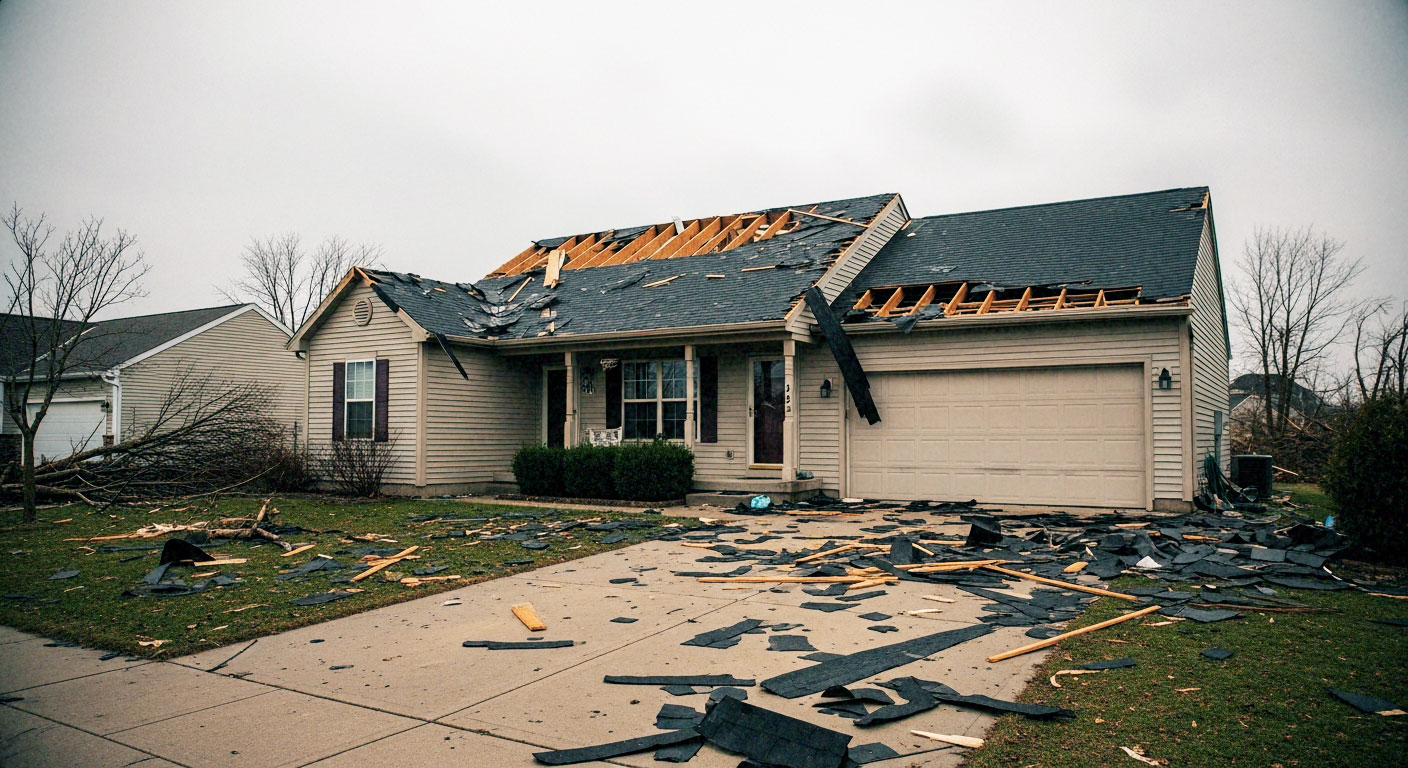
1. Inspect the Damage Safely
-
Look for:
-
Missing or lifted shingles
-
Bent flashing or exposed underlayment
-
Tree branches or debris on the roof
-
Leaks or water stains inside your home
-
-
Use binoculars or a drone if you can’t safely get on the roof.
2. Prevent Immediate Water Damage
-
If you have an active leak, use a tarp or temporary sealant (like roofing tape or caulk) to cover the area until a roofer can assess.
3. Document Everything
-
Take clear photos/videos of:
-
The damaged sections
-
Debris around the property
-
Inside water damage (if any)
-
-
This is crucial for insurance claims.
4. Contact Your Insurance Company
-
File a claim right away if the damage is substantial.
-
Most homeowners’ policies cover windstorm damage, including roof repairs or replacement.
5. Call a Licensed Roofing Contractor
-
Get at least 2–3 estimates.
-
Look for contractors who:
-
Are licensed and insured
-
Offer storm damage restoration
-
Have experience working with insurance adjusters
-
🧱 Types of Roof Repairs You Might Need
| Damage Type | Repair Option |
|---|---|
| Missing shingles | Replace with matching shingles |
| Torn shingles | Patch or replace damaged area |
| Leaking at flashing | Reseal or replace flashing |
| Punctures or holes | Patch with underlayment + shingles |
| Widespread damage | Consider full roof replacement |
💲 Cost Estimate (2025)
| Type of Repair | Estimated Cost |
|---|---|
| Minor repair (1–3 shingles) | $150–$400 |
| Flashing repair | $300–$800 |
| Moderate repairs | $800–$1,500 |
| Full replacement | $5,000–$15,000+ |
Costs vary based on materials (asphalt, metal, tile) and local labor rates.
🛑 Red Flags to Avoid
-
Door-to-door “storm chasers” asking for money upfront
-
Contractors who pressure you to sign before insurance inspection
-
Not pulling permits (if required by your city)
